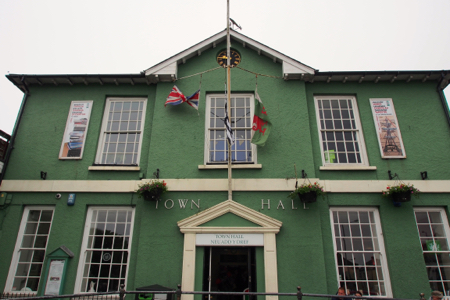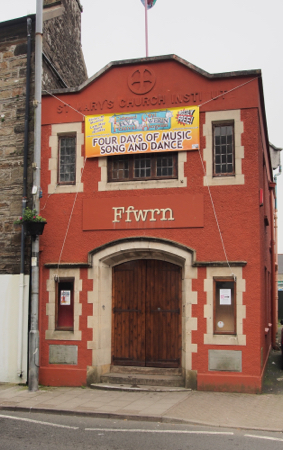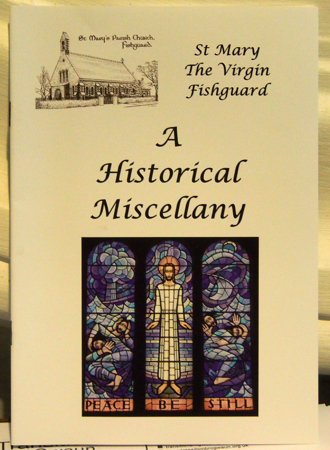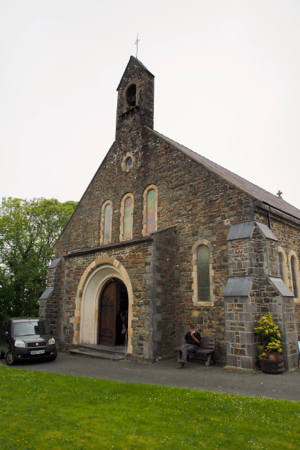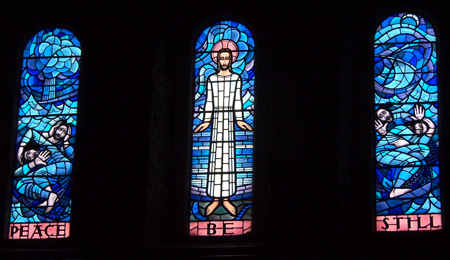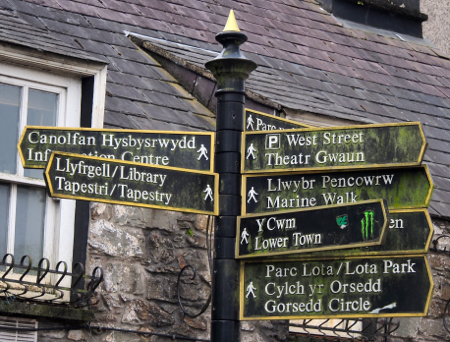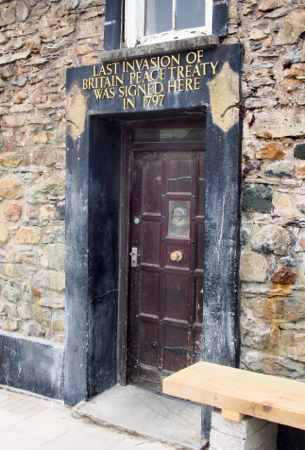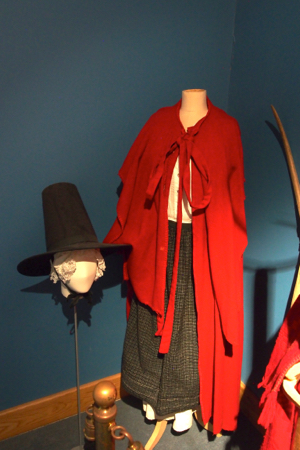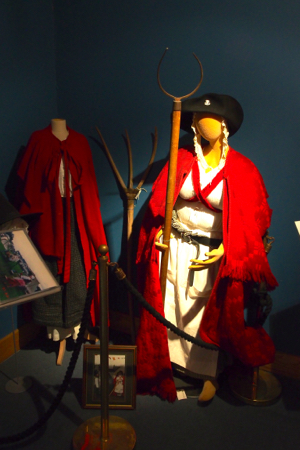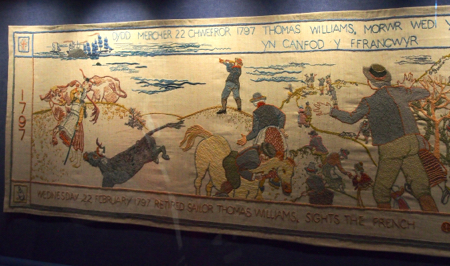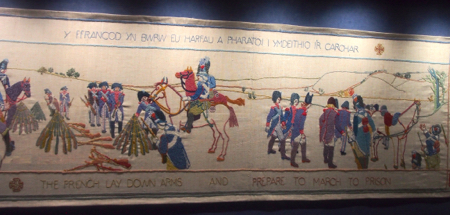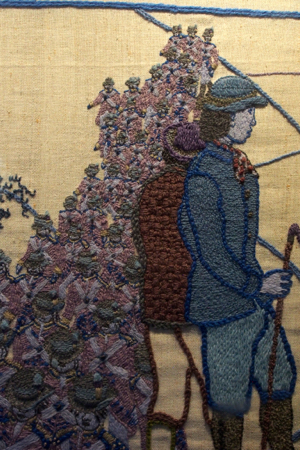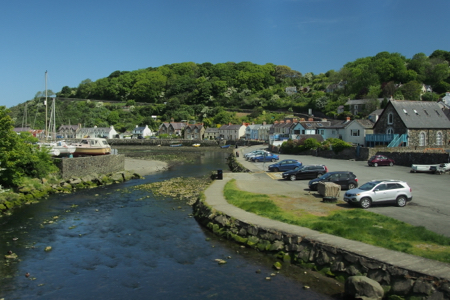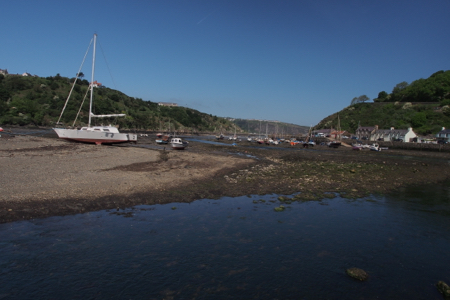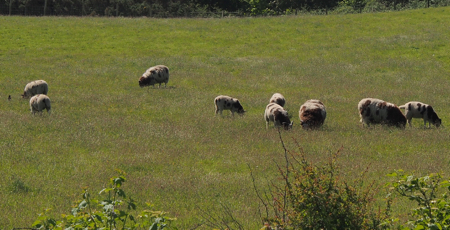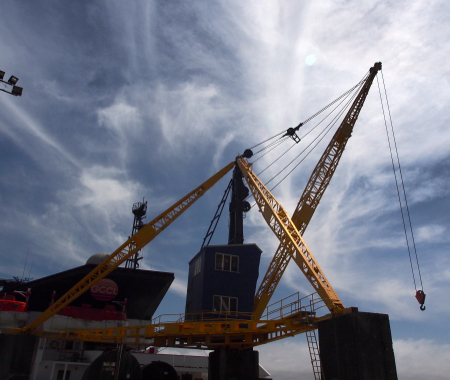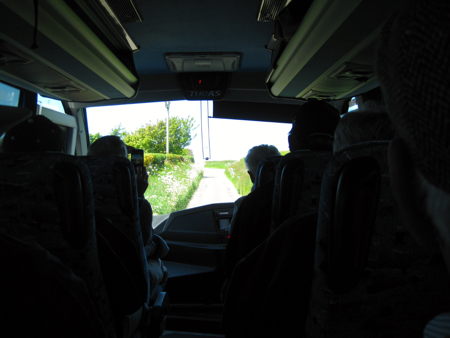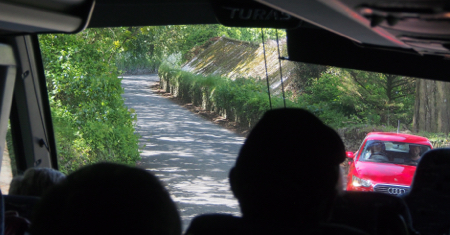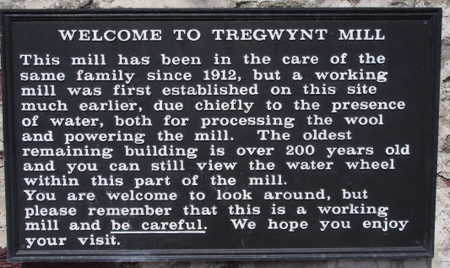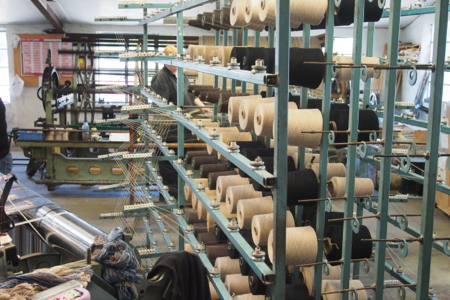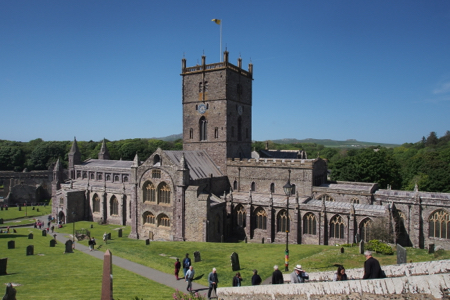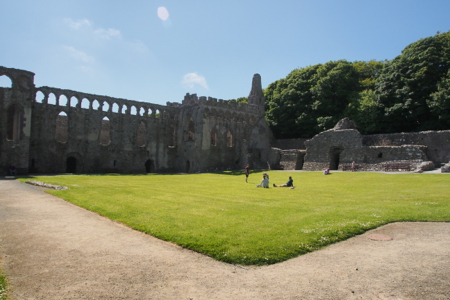Wed., 6/1/16 – Fishguard, Wales
Fishguard Town Hall
Wales is the "Land of Song"
St. Mary the Virgin church
St. Mary the Virgin church - nice windows
A finger post in Welsh - English too
Nice Welsh sign
Next we went to the Town Hall to see the 100-foot long embroidered tapestry of the “Last Invasion of Britain.” In 1797 a French force landed near the town. The soldiers were mostly convicts pressed into service. They looted the homes and drank all the wine they could find and became very drunk. In the morning they saw people on the cliff side walking round and round a hill and the French soldiers thought they were British soldiers. They were actually the town’s women that a lady named Jemima had recruited. Their red shawls had fooled the drunk/hung-over men into thinking the red-coated British army had arrived, so they surrendered. Two days later the entire invasion force officially surrendered. Over 70 women stitched for two years to finish the tapestry using 97 different colors of embroidery thread. We watched an interesting video explaining the careful process used to produce the tapestry.
Entrance to the exhibit
Traditional Welsh clothing
Traditional Welsh clothing
Last Invasion Tapestry
Last Invasion Tapestry
Last Invasion Tapestry - closeup of the stitch-work
Our small bus took us down to Lower Fishguard where the River Gwaun joins the sea. The tide was out, as usual, and all the boats sat on the dry bottom. On the way to another viewpoint of Upper and Lower Town we saw a field of rare splotchy brown sheep called Jacob sheep. Sheep in Britain are raised for their meat. Wool can be gotten elsewhere much cheaper. These sheep are not ever shorn. Phil told us there are three sheep for every person in Wales. He told us the meanings of sheep terms: ewe, ram, hoglet, maid, cade, rutting, and topping or covering. One ram can cover 100 ewes in one night. They wear a raddle or harness so they leave a fluorescent dye on a covered sheep.
Lower Fishguard harbor
Lower Fishguard harbor
Jacob sheep
After lunch on the ship, we took a ride to St. Davids, stopping on the way at the Tregwynt woolen mill where we toured the factory. They now use only modern equipment and make wool for blankets and upholstery.
The road from the bus
The red car wisely pulled over
Tregwynt Mill
Tregwynt Mill
Tregwynt Mill
We finally arrived in the touristy town of St. Davids where we wandered down to the Cathedral and Bishop's Palace ruins. As on our last trip, the Cathedral was closed for a BBC production of some sort so we still have not seen the inside. At least it was another beautiful day so we strolled around town and sat and watched all the tourists.
St. David's Cathedral
Bishop's Palace ruins
| Return to Top | Return to Itinerary | Return to Trips page to view other trips | Return to Dreamcatcher Home Page |
